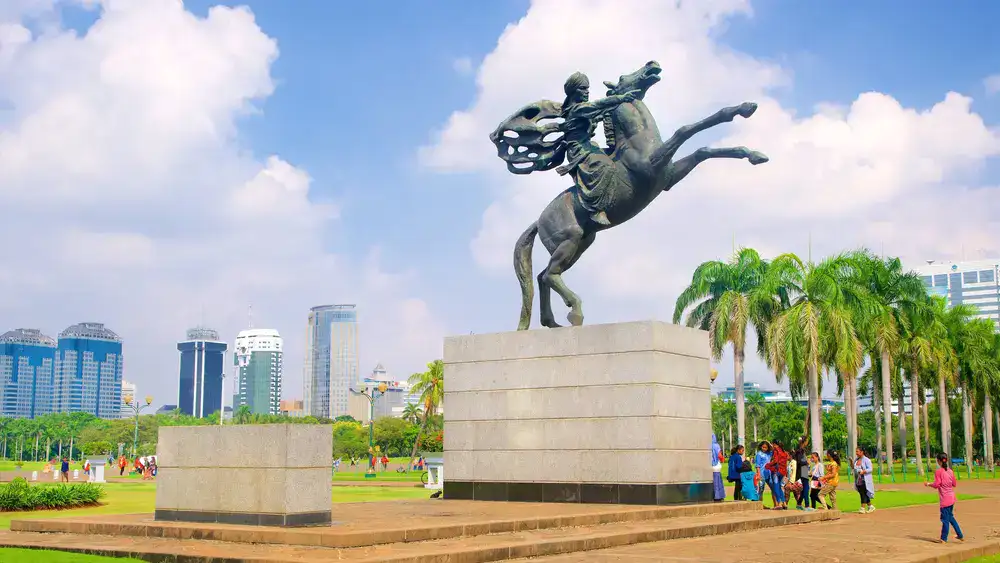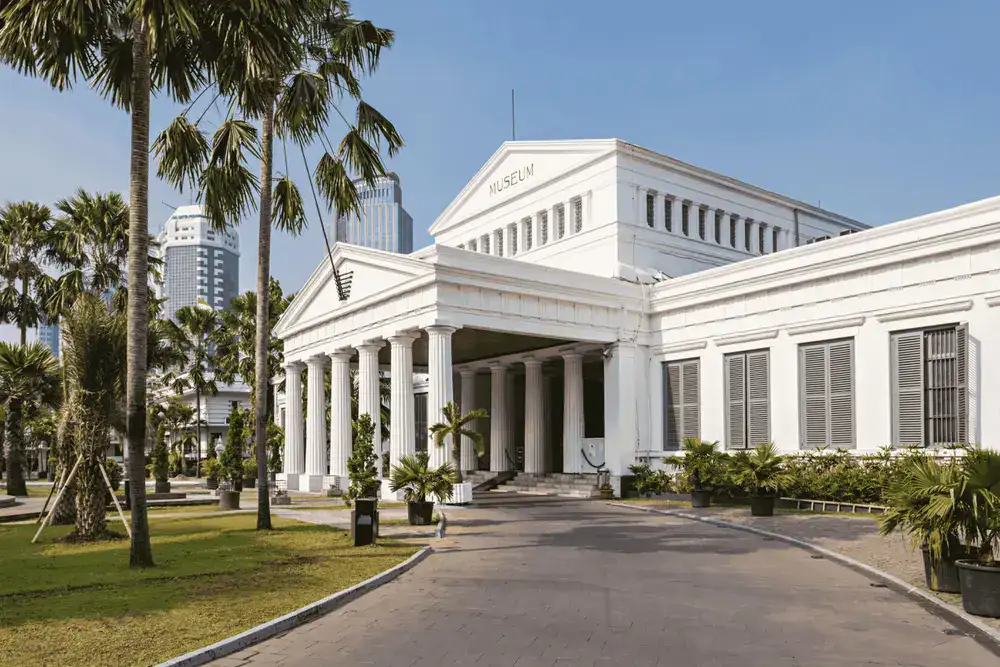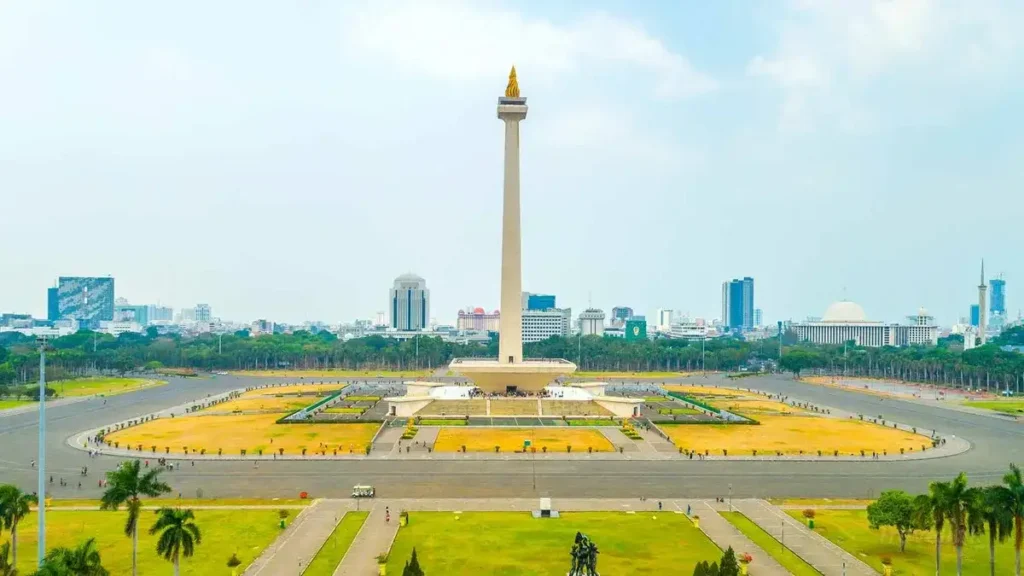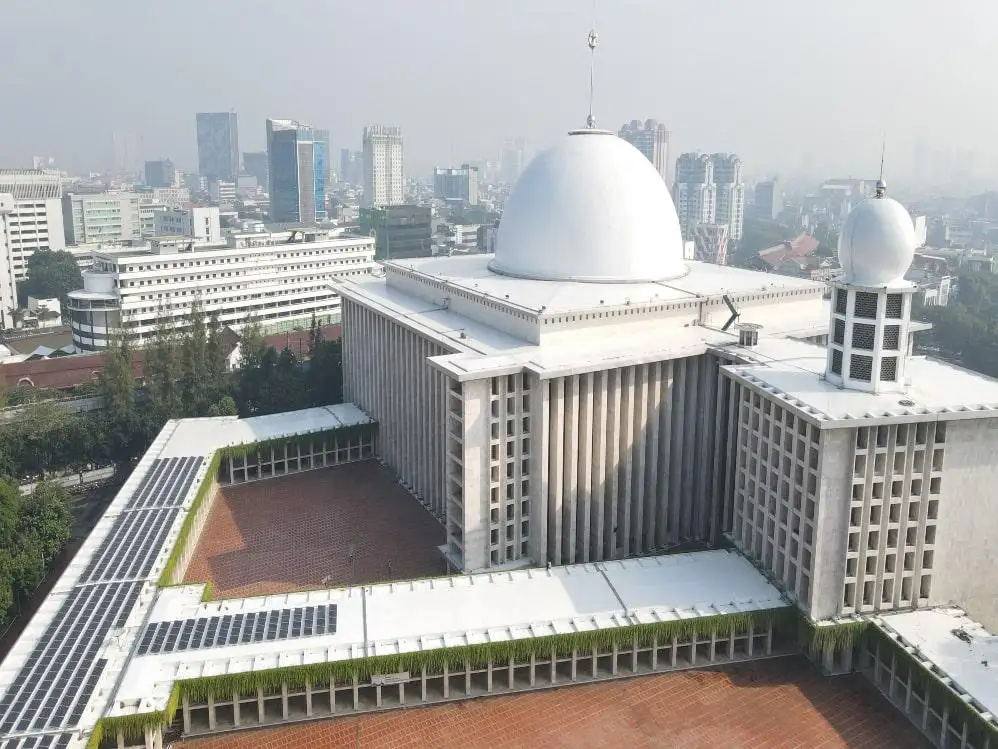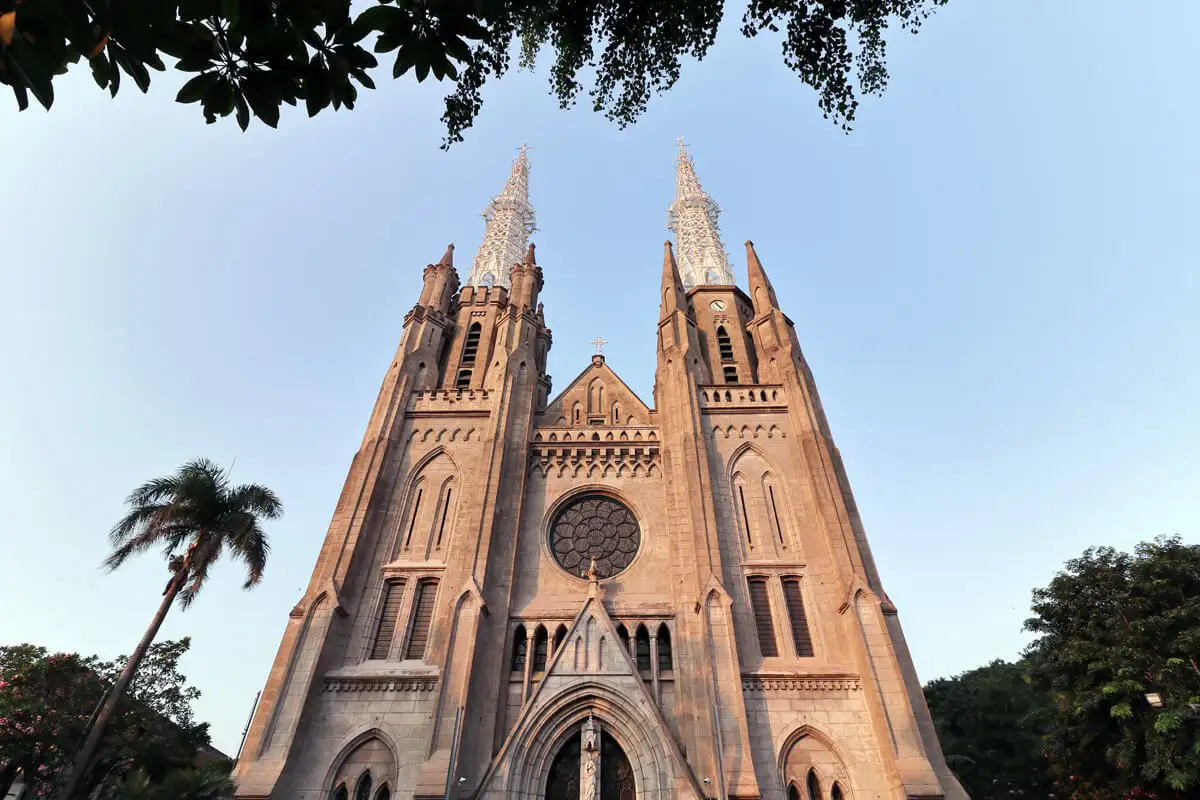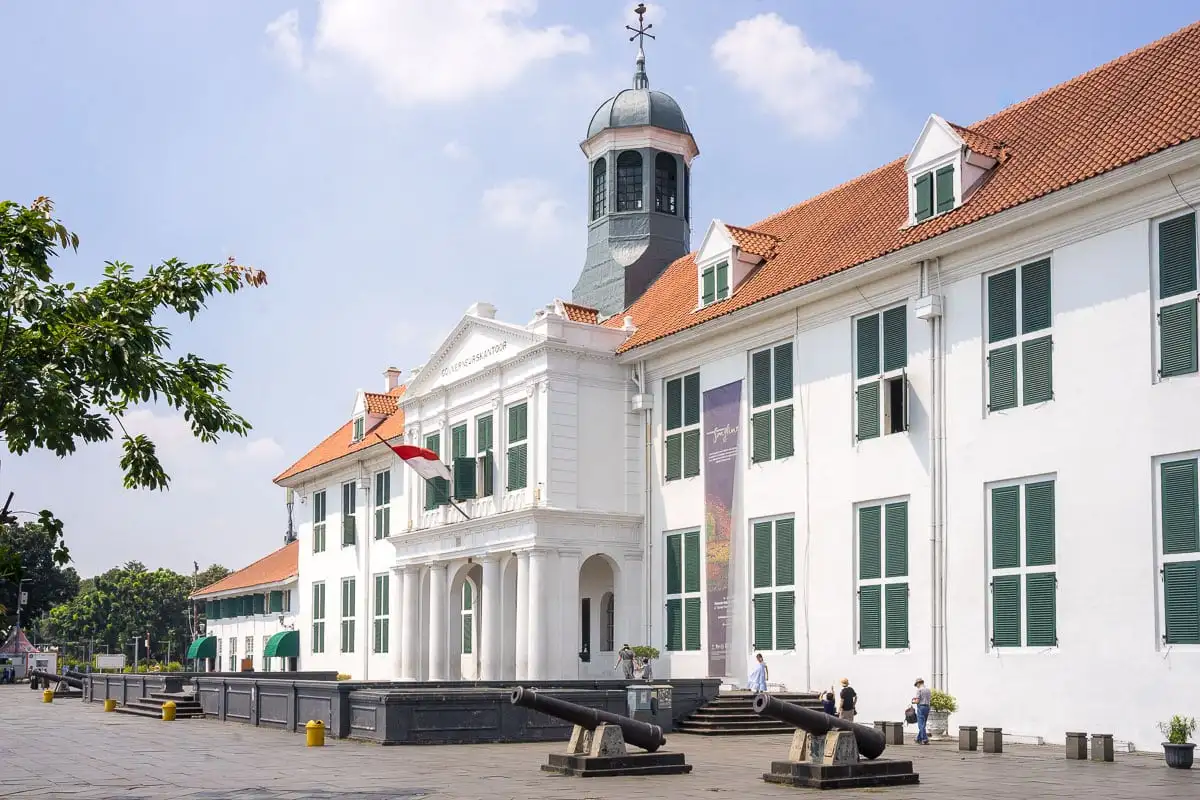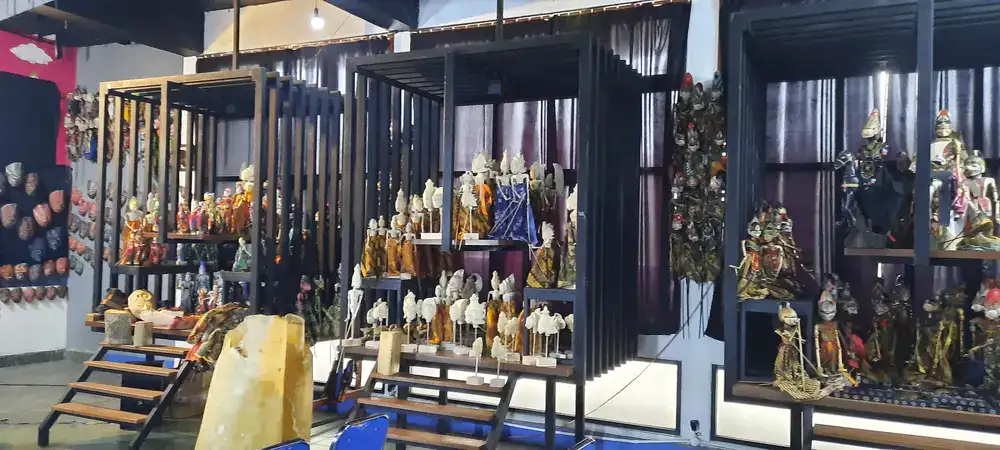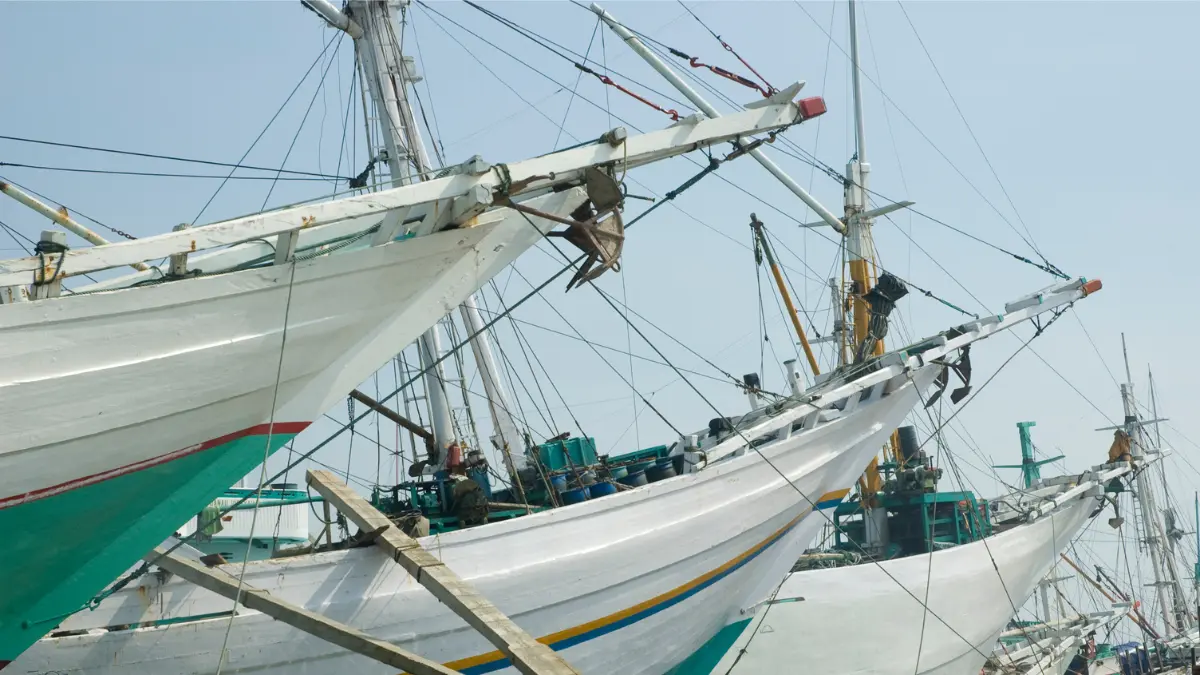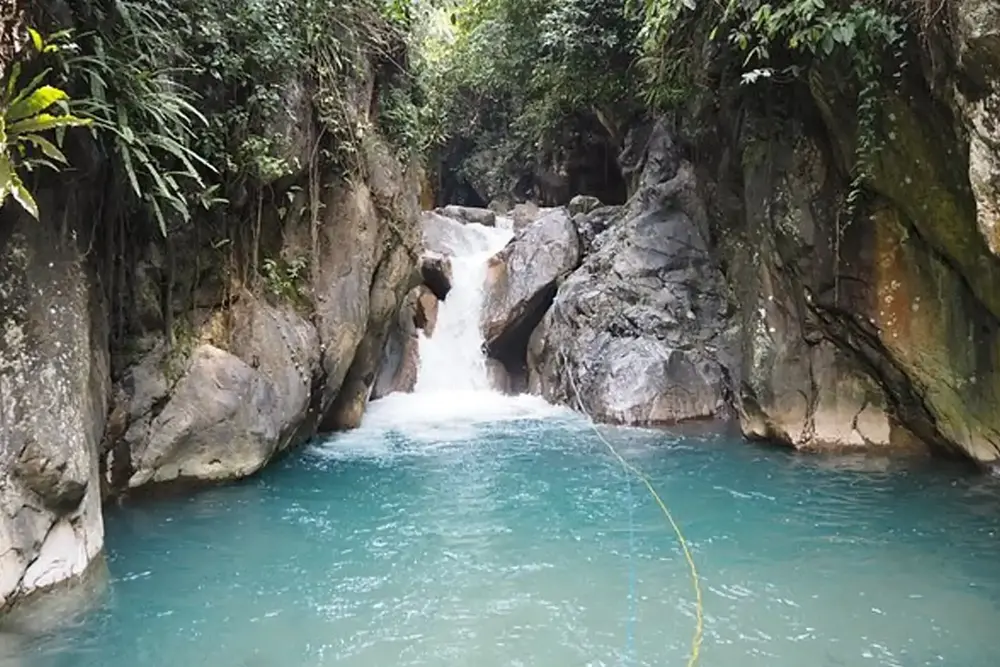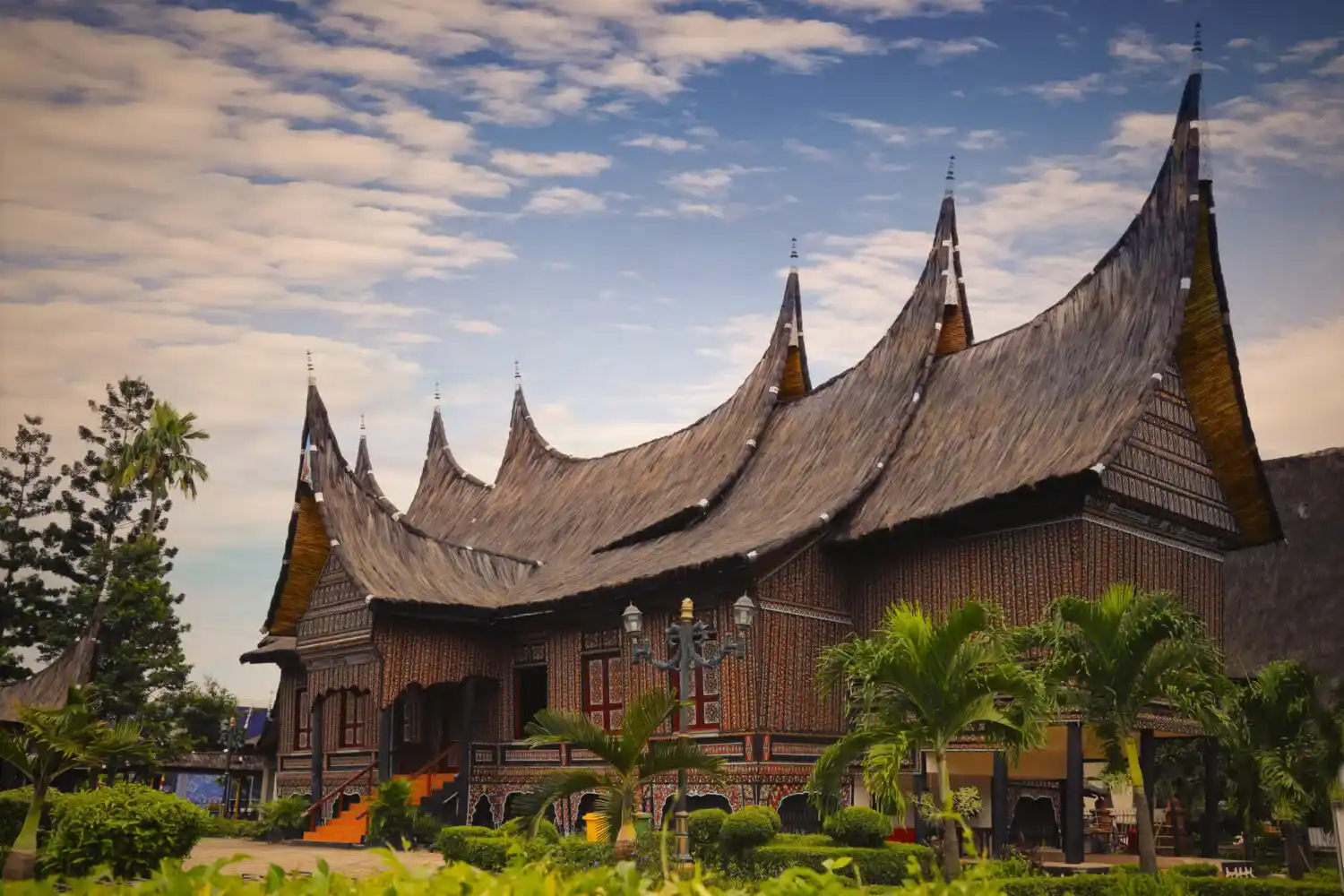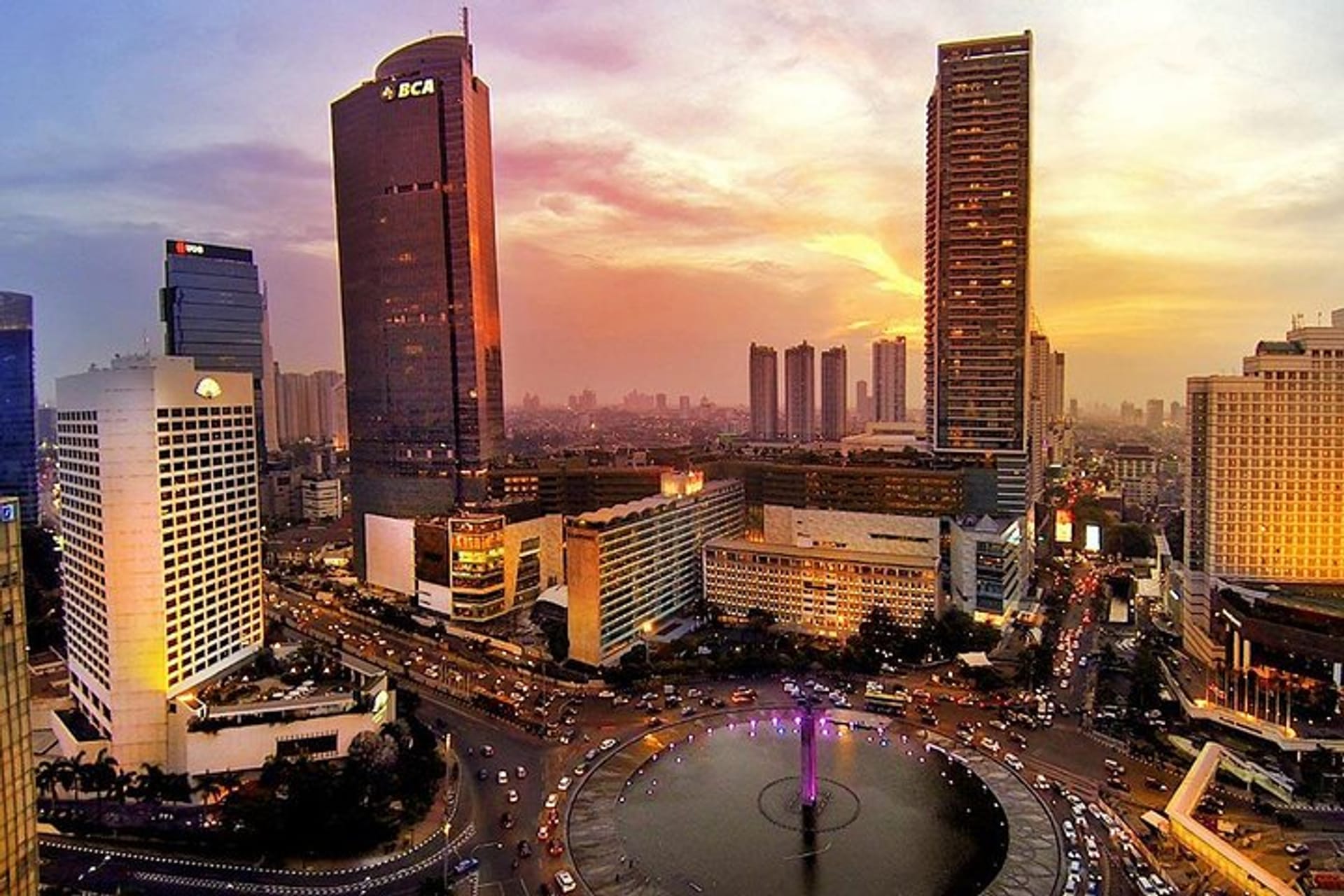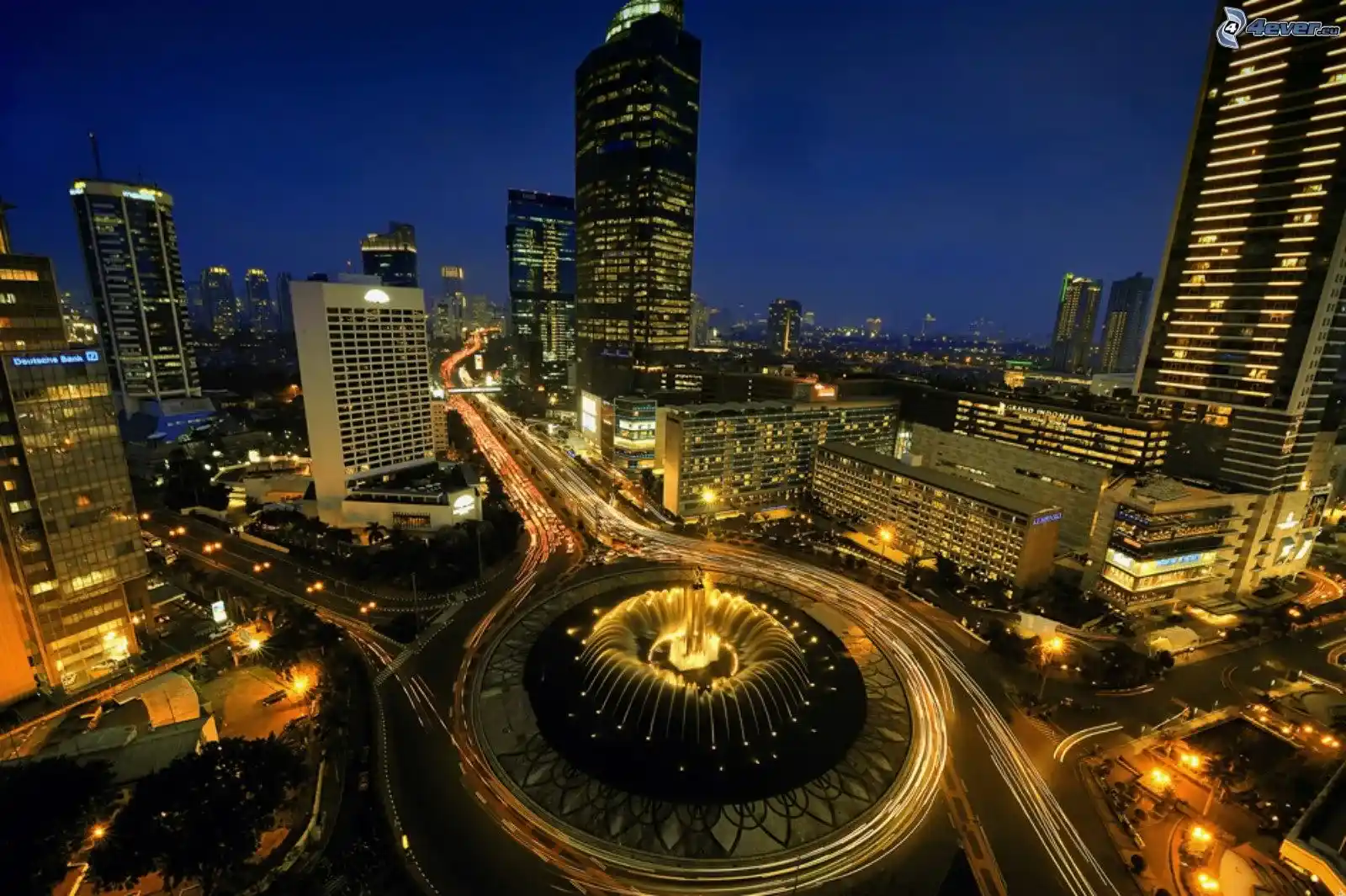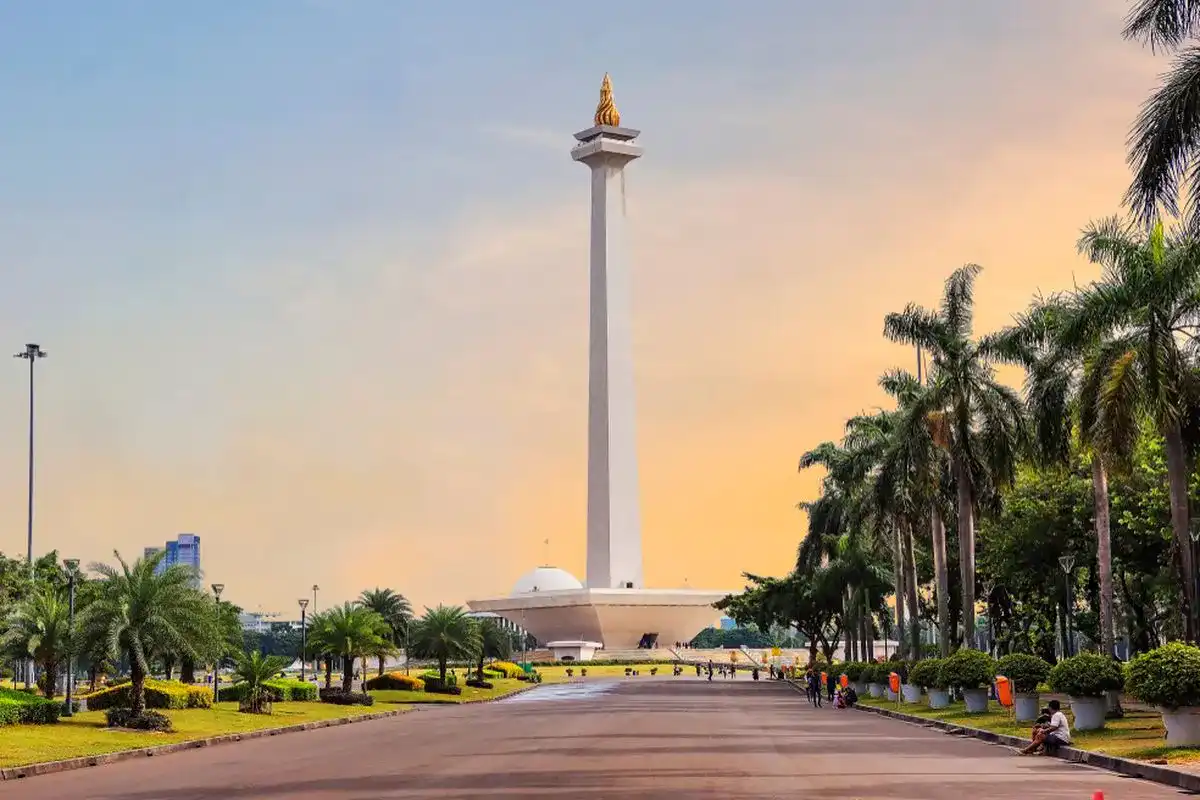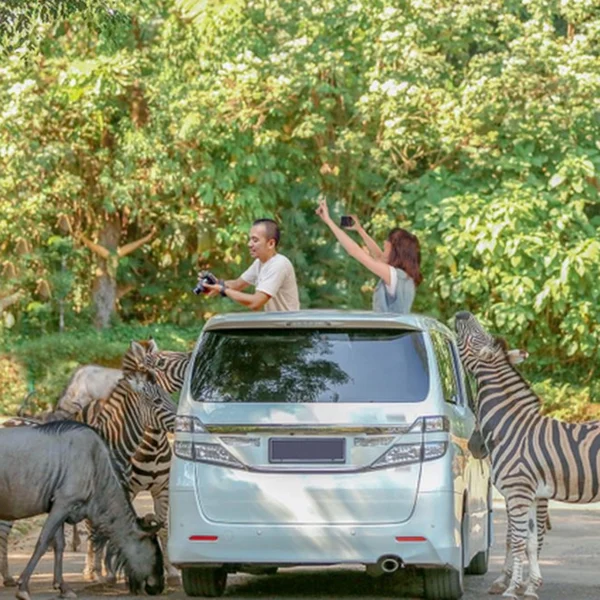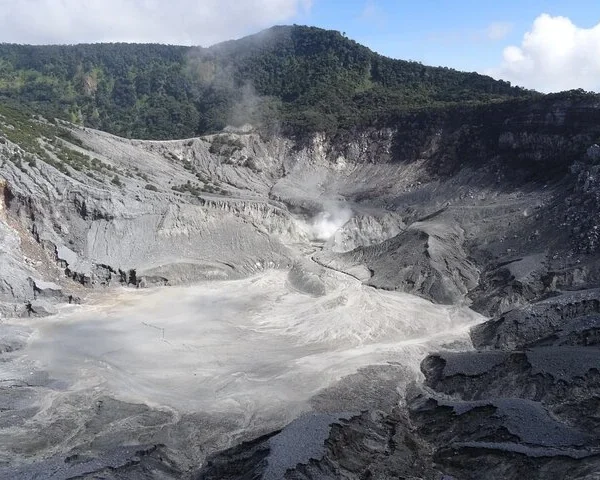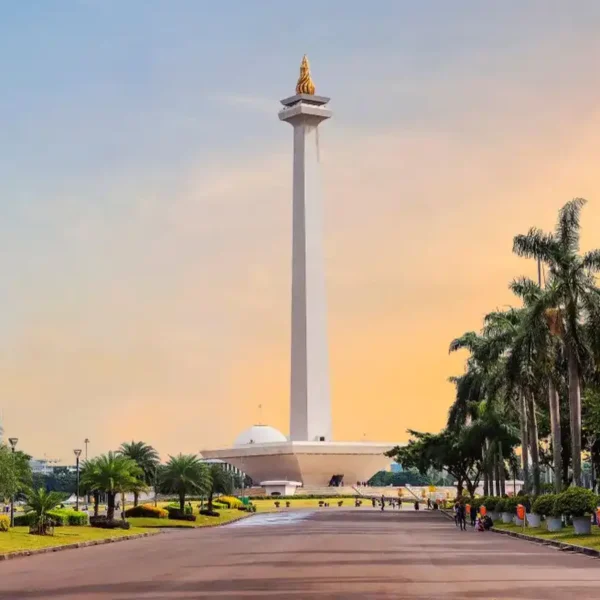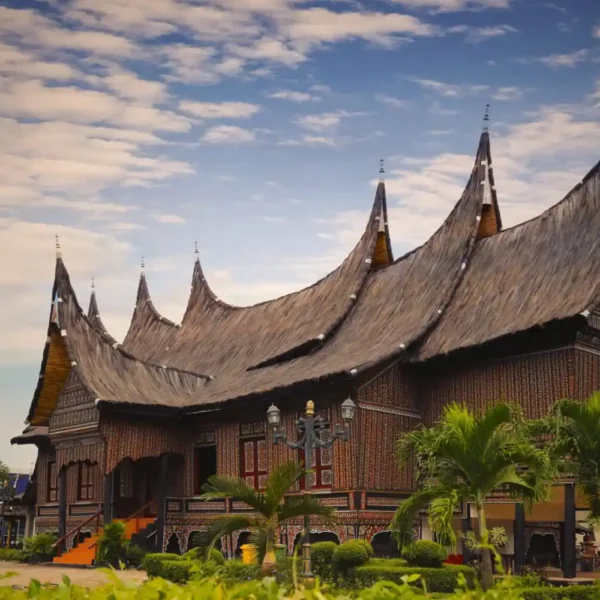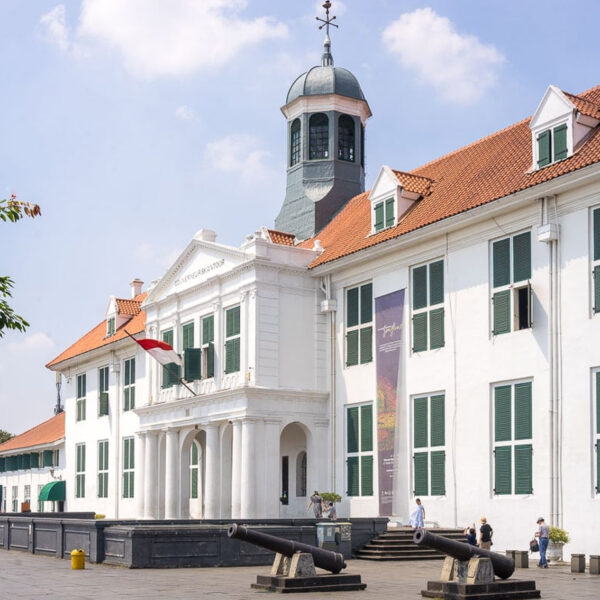
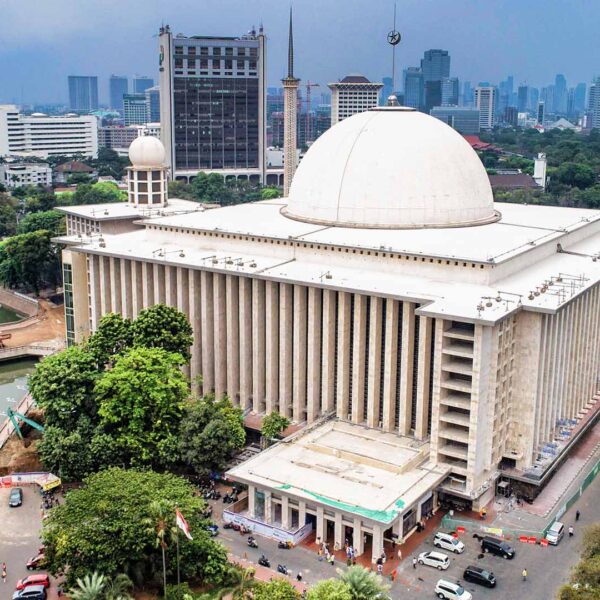
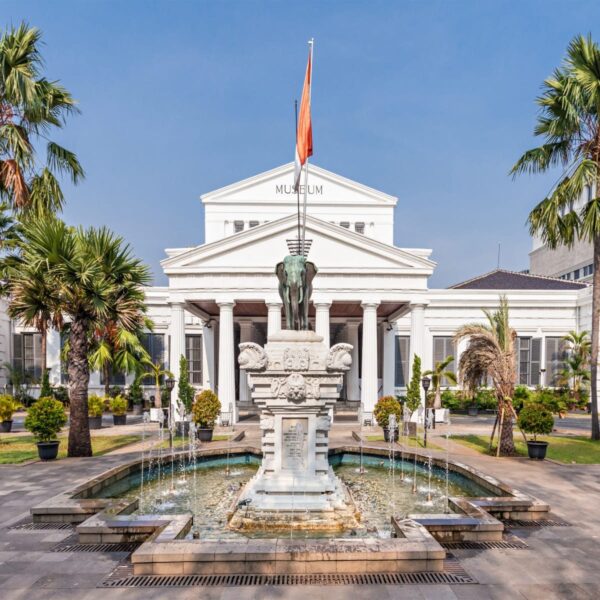
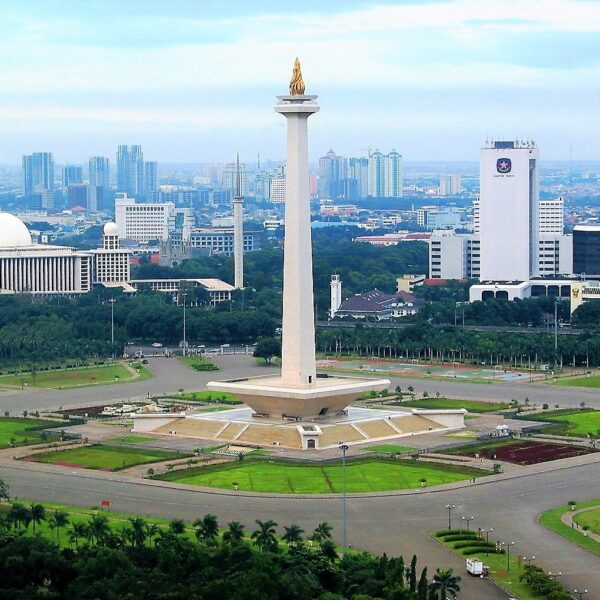
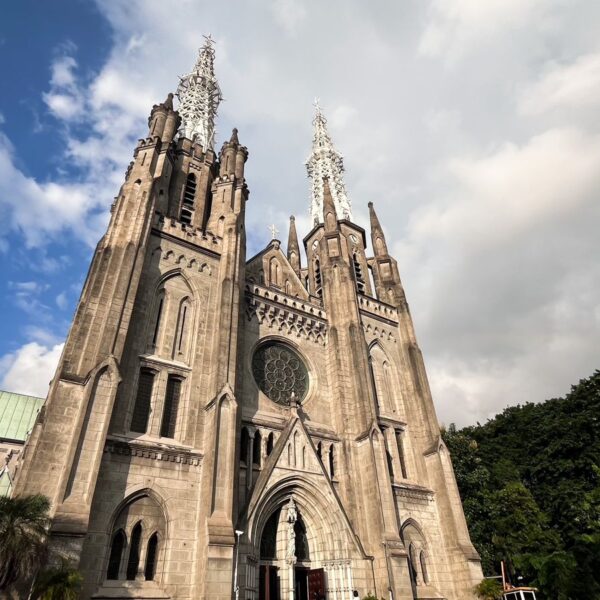
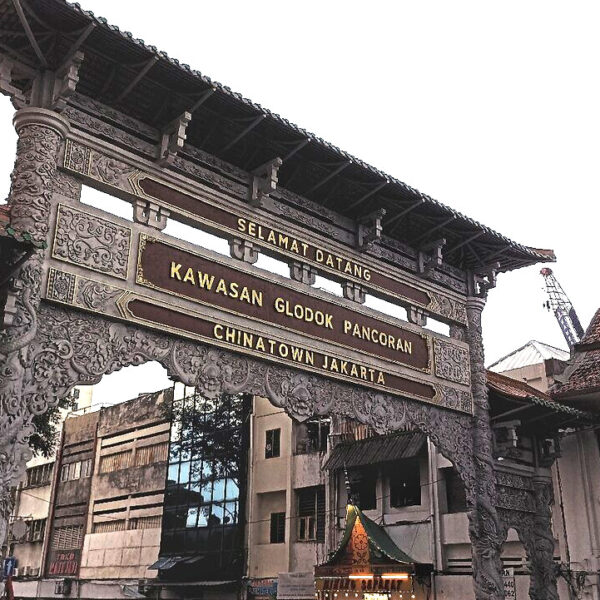
Full-day Jakarta City Tour: Explore Jakarta’s Iconic Attractions
Start from
per adult (for minimum booking of 2 adults)
About this activity
Duration
Complimentary Pick-up
Free Cancellation
Tour Type
Professional Live Guide
Overview
Welcome to Jakarta, the vibrant capital of Indonesia and a city where tradition meets modernity. As the heart of the nation, Jakarta offers a unique blend of cultural heritage, historical landmarks, and bustling urban life.
From iconic attractions like the National Monument (Monas) and the Istiqlal Mosque to the charming streets of Old Town Batavia and the colorful local markets, Jakarta showcases the essence of Indonesia’s rich history and diverse culture.
A full-day Jakarta city tour of this dynamic metropolis is the perfect way to explore its top highlights, from its colonial past to its status as a thriving global hub.
Whether you’re captivated by traditional art at a Wayang Puppet Studio or intrigued by the towering skyscrapers of the modern cityscape, Jakarta promises a journey full of discovery and unforgettable experiences.
Embark on this immersive tour and uncover the stories, flavors, and landmarks that make Jakarta truly extraordinary.
Jakarta City Tour Itinerary:
Embark on a comprehensive full-day exploration of Jakarta’s most iconic attractions with the Jakarta City Tour by Ekaputra Tour. This meticulously crafted itinerary immerses you in the city’s rich history, diverse culture, and architectural marvels.
1. Merdeka Square
Start your journey at Merdeka Square, the heart and soul of Jakarta. This sprawling open space is home to some of the city’s most iconic landmarks, including the Presidential Palace, where Indonesia’s head of state resides, and the Welcome Statue, a symbol of Indonesia’s openness to the world.
As you walk through the square, you’ll also pass the Arjuna Wijaya statue, a significant monument commemorating the military struggle for Indonesia’s independence. These landmarks collectively represent the nation’s rich heritage and its journey toward freedom.
Merdeka Square’s central location makes it an ideal starting point for exploring Jakarta, as it provides a deep connection to Indonesia’s political and cultural history. The square is often bustling with visitors and locals alike, making it a perfect spot for capturing the essence of Jakarta’s historical and political significance.
2. National Museum
Next, immerse yourself in Indonesia’s history at the National Museum, one of the most comprehensive museums in Southeast Asia. This cultural gem showcases a vast collection of archaeological, ethnographic, and geographical artifacts, offering a fascinating look at Indonesia’s diverse cultures, ancient civilizations, and rich history.
With galleries dedicated to prehistoric, Hindu-Buddhist, and Islamic art, visitors can learn about the development of Indonesian society over millennia. Please note, the museum is closed on Mondays, so plan your visit accordingly.
It’s an essential stop for anyone interested in exploring the cultural depth and history of Indonesia, and the exhibits are designed to be both educational and engaging for visitors of all ages.
3. National Monument (Monas)
No trip to Jakarta is complete without visiting the National Monument, or Monas, a towering symbol of Indonesia’s independence. Standing at 132 meters tall, Monas offers an impressive view of the city from its observation deck, allowing visitors to take in Jakarta’s skyline.
The monument’s base houses exhibits that narrate the nation’s historical milestones, offering a deep dive into Indonesia’s fight for independence and the spirit of its people.
Monas is a powerful reminder of Indonesia’s freedom, and its design represents the struggle and achievements of the country’s past. The surrounding park is a popular place for locals and tourists alike to relax, making Monas a perfect blend of history and leisure. Please be aware that the monument is closed on Mondays.
4. Istiqlal Mosque
Explore Istiqlal Mosque, the largest mosque in Southeast Asia and one of the most impressive religious landmarks in Jakarta. Built to symbolize Indonesia’s independence, this mosque is a testament to the country’s commitment to religious diversity, as it stands in the heart of Jakarta, close to the Jakarta Cathedral.
Visitors can marvel at the mosque’s grand architecture and its tranquil atmosphere, as well as learn about its significance in Indonesia’s Muslim community. Istiqlal Mosque is open to visitors, except on Fridays when it is closed for prayers.
During this time, you can still admire the mosque’s exterior from the outside and appreciate its vastness and beauty. It is an important symbol of Jakarta’s spiritual and cultural identity, offering visitors a chance to experience Indonesia’s religious inclusivity.
5. Jakarta Cathedral
Across from Istiqlal Mosque stands the neo-gothic Jakarta Cathedral, a stunning example of religious harmony in Indonesia. Built in 1891, this cathedral is not only a place of worship but also a significant piece of Jakarta’s colonial history.
The cathedral’s intricate design, with its high spires and elegant interiors, makes it a striking contrast to the more modern structures of the city. It is also an important symbol of the Christian community in Jakarta and Indonesia at large.
Visitors can admire the cathedral’s architectural beauty and learn about its role in the nation’s religious history. The juxtaposition of Jakarta Cathedral and Istiqlal Mosque, located across the street from each other, reflects the harmony between Indonesia’s diverse religious communities and is a must-see for those interested in the country’s multicultural fabric.
6. Glodok Chinatown & Dharma Bhakti Temple
Step into Jakarta’s vibrant Chinatown, Glodok, where you’ll find a blend of traditional Chinese culture and modern life. This bustling district is home to colorful markets, street food vendors, and shops selling everything from spices to herbal medicine.
As you explore the area, be sure to visit the Dharma Bhakti Temple, Jakarta’s oldest Confucian temple, which has been standing since the 1600s. The temple’s architecture and serene atmosphere offer a peaceful contrast to the lively streets of Glodok.
Glodok Chinatown is not only a hub for Chinese culture in Jakarta but also a place where visitors can learn about the rich history of the Chinese community in Indonesia. From traditional medicine shops to bustling markets and the temple, this area provides a fascinating glimpse into the city’s cultural diversity. It’s a must-visit for anyone interested in the history of Jakarta’s Chinese population.
7. Old Town Batavia (Kota Tua)
Stroll through the historic streets of Kota Tua, Jakarta’s Old Town, where remnants of the Dutch colonial period are still visible in the well-preserved European-style buildings and cobblestone streets.
This area, once the center of Jakarta’s colonial administration, is now a vibrant part of the city’s heritage, attracting both locals and tourists. The historic architecture and old warehouses, many of which date back to the 17th century, transport visitors back in time to the city’s colonial past.
Kota Tua is also home to several museums, including the Jakarta History Museum and the Wayang Museum, where visitors can learn about Indonesia’s colonial history and the art of traditional puppet theater. The area has become a cultural hub, with cafes, galleries, and street performers adding to the lively atmosphere, making it a perfect place to explore Jakarta’s past in a modern context.
8. Wayang Puppet Studio
Dive into Indonesia’s rich cultural heritage at a Wayang Puppet Studio, where traditional puppet-making comes to life. Wayang, a form of shadow puppet theater, is recognized by UNESCO as an important cultural art form.
At the studio, you’ll have the opportunity to witness master artisans crafting intricately designed puppets used in performances that tell stories from Indonesian folklore and mythology.
During your visit, you’ll also learn about the history and significance of Wayang, which has been an integral part of Indonesian culture for centuries. You may even get a chance to see a live demonstration of a Wayang performance, immersing yourself in the captivating world of traditional storytelling. This experience offers a deep dive into one of Indonesia’s most iconic artistic traditions.
9. Sunda Kelapa Harbor
Conclude your tour at Sunda Kelapa Harbor, the historical heart of Jakarta’s maritime trade. This busy harbor has been a center of activity for centuries, once serving as the primary port for the city during the Dutch colonial period.
Today, it remains a vital part of Jakarta’s economy and offers visitors a glimpse into the city’s seafaring past. The harbor is famous for its traditional Pinisi wooden schooners, which are still used for transporting goods around Indonesia. As you explore the harbor, you’ll see these magnificent ships docked, reflecting the city’s rich maritime history.
Sunda Kelapa is a bustling and historic site that showcases Jakarta’s enduring connection to the sea, making it a perfect spot to end your exploration of the city’s past and present. This thoughtfully curated itinerary ensures a memorable experience, capturing the essence of Jakarta’s past and present.
Note
- Every Monday, The National Monument and The National Museum are closed. You could visit the outside area.
- Every Friday, the Istiqlal mosque is closed for religious purposes. You could visit the outside area.
- Times and activity are subject to change due to local traffic conditions
- What to bring: Sunglasses, Hat, Camera, Cash (Indonesian Rupiah)
- There is an extra charge for pick-up/drop-off at the airport/hotel near the airport/BSD City/outside Jakarta
Included/Exclude
- Private Air Conditioner Vehicle
- Licensed English Speaking Tour Guide
- Mineral water 600 ml
- Parking, Highway & Donations Fee
- All Entrance & Admission Fees
- Government Taxes & Service Charge
- Tipping Guide and Driver
- Meals (Optional)
- Personal Expenses
Frequently Asked Question
body {
font-family: Arial, sans-serif;
margin: 20px;
}
.faq-container {
width: 100%;
max-width: 600px;
margin: auto;
}
.faq-category {
margin-bottom: 20px;
}
.faq-category h3 {
background: #f4f4f4;
padding: 10px;
cursor: pointer;
border: 1px solid #ccc;
}
.faq-item {
border-bottom: 1px solid #ddd;
}
.faq-question {
background: #fff;
padding: 10px;
cursor: pointer;
display: flex;
justify-content: space-between;
border: 1px solid #ccc;
}
.faq-answer {
display: none;
padding: 10px;
background: #f9f9f9;
}
.toggle-buttons {
text-align: center;
margin-bottom: 10px;
}
.toggle-buttons button {
padding: 10px;
margin: 5px;
border: none;
cursor: pointer;
background: #007BFF;
color: white;
border-radius: 5px;
}
General
Mount Bromo
function toggleAnswer(question) {
let answer = question.nextElementSibling;
let symbol = question.querySelector('span');
let isVisible = answer.style.display === 'block';
answer.style.display = isVisible ? 'none' : 'block';
symbol.textContent = isVisible ? '+' : '-';
}
function toggleCategory(category) {
let content = category.nextElementSibling;
let isVisible = content.style.display === 'block';
content.style.display = isVisible ? 'none' : 'block';
}
function expandAll() {
document.querySelectorAll('.faq-answer').forEach(answer => answer.style.display = 'block');
document.querySelectorAll('.faq-question span').forEach(span => span.textContent = '-');
document.querySelectorAll('.faq-content').forEach(content => content.style.display = 'block');
}
function collapseAll() {
document.querySelectorAll('.faq-answer').forEach(answer => answer.style.display = 'none');
document.querySelectorAll('.faq-question span').forEach(span => span.textContent = '+');
document.querySelectorAll('.faq-content').forEach(content => content.style.display = 'none');
}
